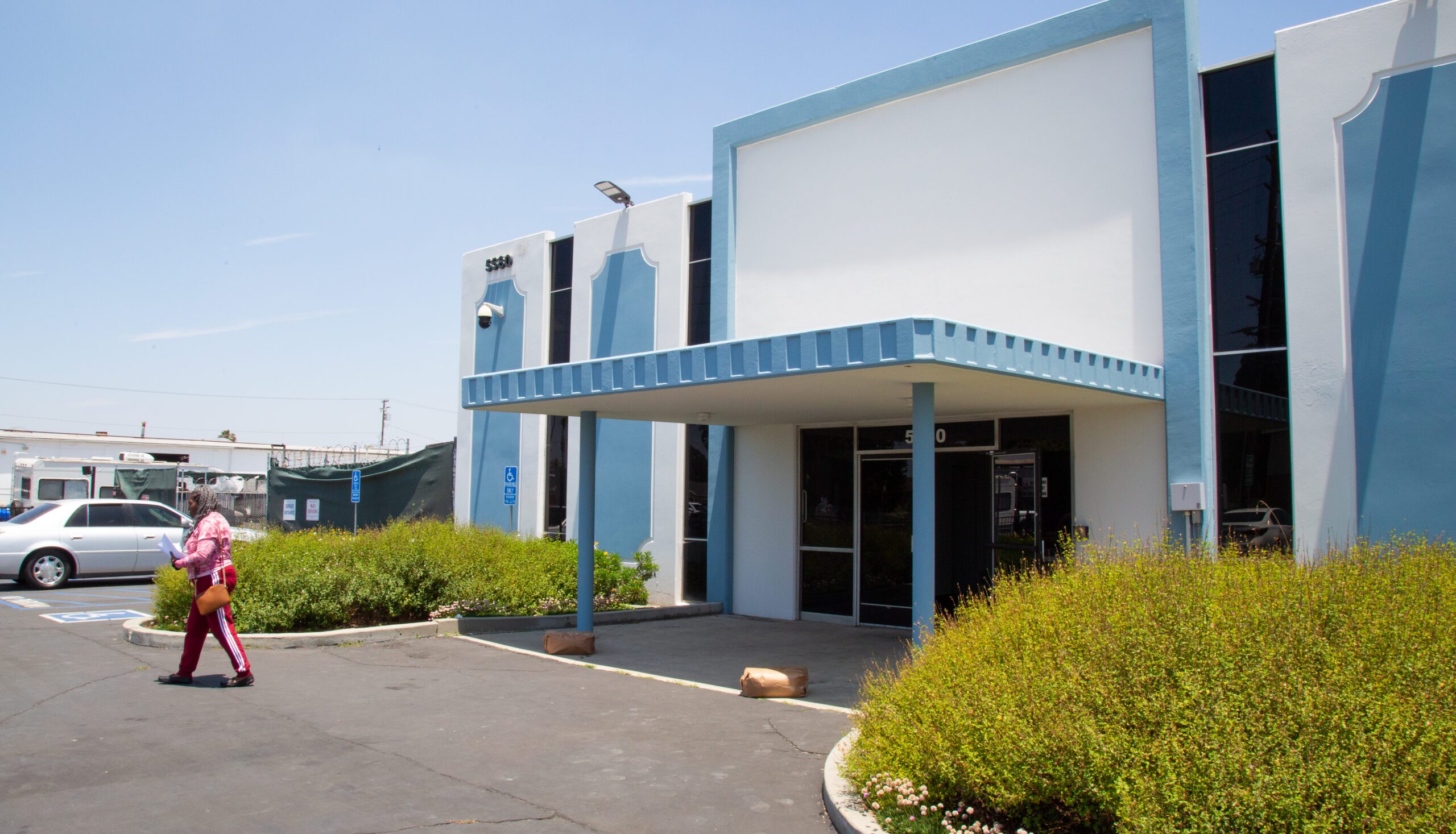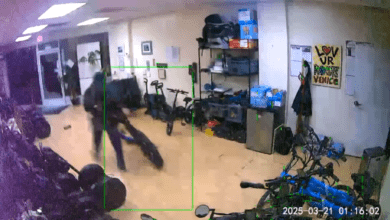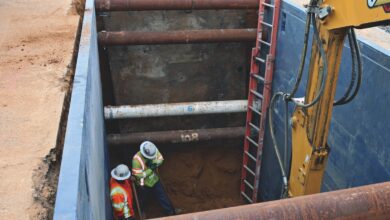Food Bank of Southern California to open new North Long Beach ‘sharehouse’ • Long Beach Business Journal

Each year, the Food Bank of Southern California provides an average of 40 million pounds of food to over 850,000 children, adults and seniors throughout Los Angeles County.
But in the coming months, the organization will be able to reach even more people facing food insecurity, with the opening of its new North Long Beach location. Officials held a ribbon-cutting ceremony for the site on Tuesday, and CEO Jeanne Cooper said she hopes that the new 26,000-square-foot space at 5580 Cherry Ave. will officially open in the next nine months to a year.
The food bank, which has served LA County for about 47 years, was given the opportunity to expand after receiving a capacity grant, Cooper told the Business Journal.
“I thought, ‘Well, let’s buy a building,’ because the need is so great here in the north part of town, and we’re not able to meet the needs of the people that need to be served,” Cooper said.
In addition to the new space, there are numerous efforts in the works to expand the Food Bank’s offerings while further establishing its presence in the community, she said.
“The battle of food insecurity is real, and it’s unfortunate that people have to make that choice between paying rent or buying food,” Cooper continued. “To me, it’s absolutely ridiculous, and it’s unacceptable. And so whatever we can do to meet the need, we’re going to do it.”
Plans to reach more of those in need include a “Family Food Boxes” initiative with youth-serving organizations such as the Boys and Girls Club purchasing food from local farmers through a grant, and using mobile food pantries painted by local artists, which will be used primarily to service seniors.
A Cambodian Food Equity project is also expected to launch in September, which will offer culturally relevant foods to those experiencing food insecurity.
The food network, which includes a range of organizations such as food rescues, urban gardens and makers of local food products, has changed a lot over the years, Cooper explained in a presentation following Tuesday’s ribbon-cutting. Policy changes such as Senate Bill 1383, for instance, now require corporate donors to donate unused food rather than dumping it, she said.
While the Food Bank of Southern California headquarters is located on San Francisco Avenue, the new space will serve as a “sharehouse,” which will offer a shared office space and conference area, a warehouse, and a large refrigerator and freezer for other food organizations to utilize.
“We’re really excited to work with our grassroots organizations who really don’t get the proper acknowledgement and accolades for what they do,” Cooper told the Business Journal. “They’re out here, really the frontline servers, dealing directly with people. We’re just in the background, and so that partnership is really very important to us. To highlight those grassroots organizations that have been doing all the hard work, it means a lot to us.”
One in four residents in LA County are reportedly facing food insecurity, according to a USC Dornsife study, and Councilmember Al Austin suspects this number is similar in Long Beach, he said during the event. Long Beach is the second largest city in the county, and many of its residents are people of color who live within nutritional food deserts, Austin said.
“This is a district that is very diverse,” Austin said of the 8th District. “We’d like to find ourselves living in a vibrant, inclusive and livable community, and I do think that fighting food insecurity makes us more livable as a community.”
As a resident of North Long Beach, Mayor Rex Richardson said that he is particularly proud when new resources and amenities are brought to the neighborhood.
Richardson first learned about the Food Bank of Southern California during the pandemic, he said during the event. While traditionally, assisting with food insecurity has been left to counties and the state, the responsibility then shifted to cities, Richardson said.
“Something special happened. The food network ended up becoming much more than food—people were able to receive things like diapers and gift cards and all sorts of things that helped families to make it through a difficult time during the pandemic,” Richardson said.
During that time, the Food Bank of Southern California stepped up to provide the food, and help to fund an additional 15 or so food pantries across the city, according to Richardson.
While the food bank works with about 275 nonprofit partners which provide food on a weekly or monthly basis to neighborhoods within its service areas, Cooper looks forward to further supporting food organizations with the new sharehouse.
“We’re just really excited that we can share this space,” Cooper said. “I don’t think a lot of organizations look at the opportunity to share, and I think that’s really important because as a food bank, we’re partners, and we have to keep that in mind in order for us to combat food insecurity. To service our community, we have to do it in partnership. You can’t do it alone.”
Long Beach food banks see demand rise as extra pandemic aid wanes




